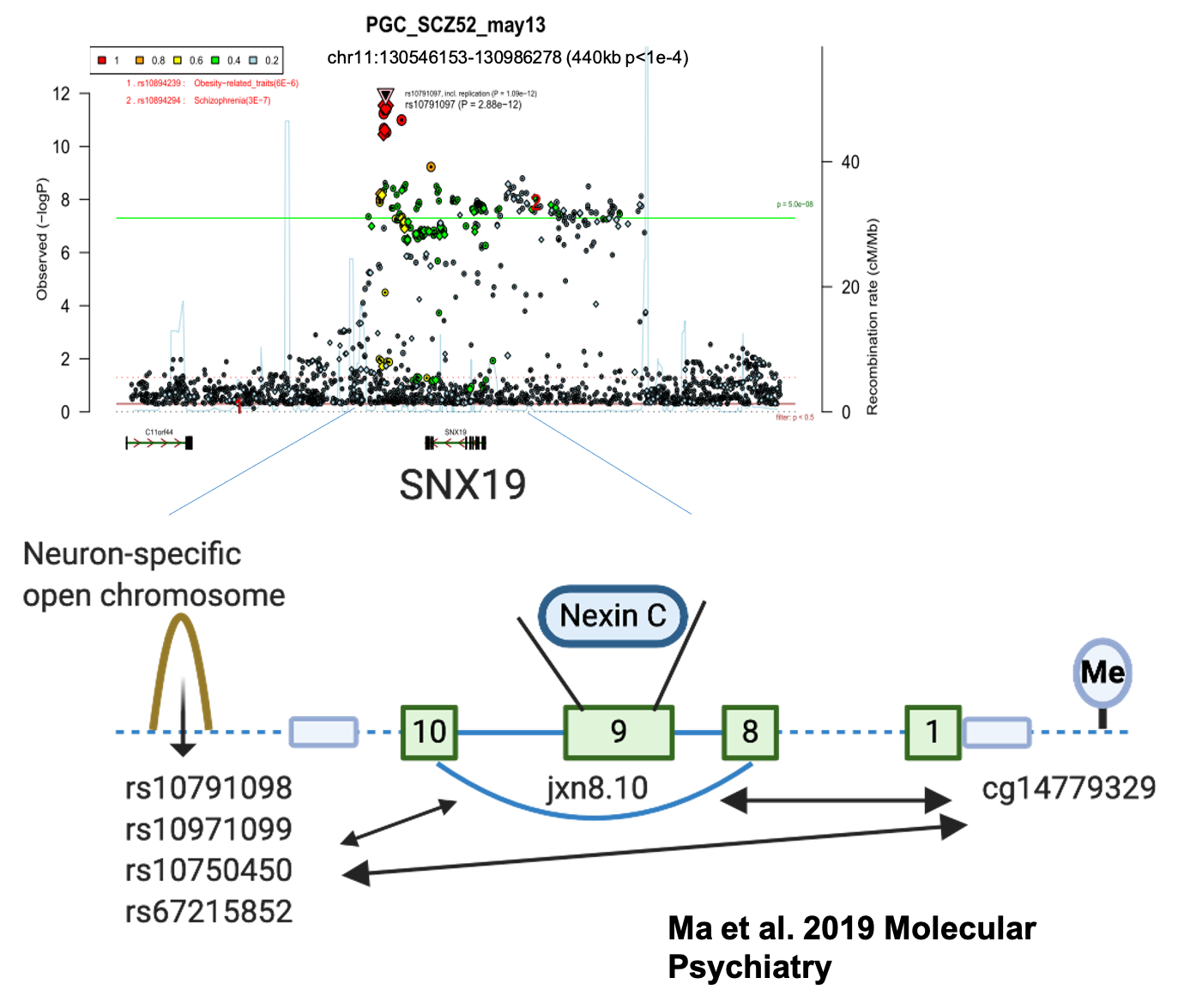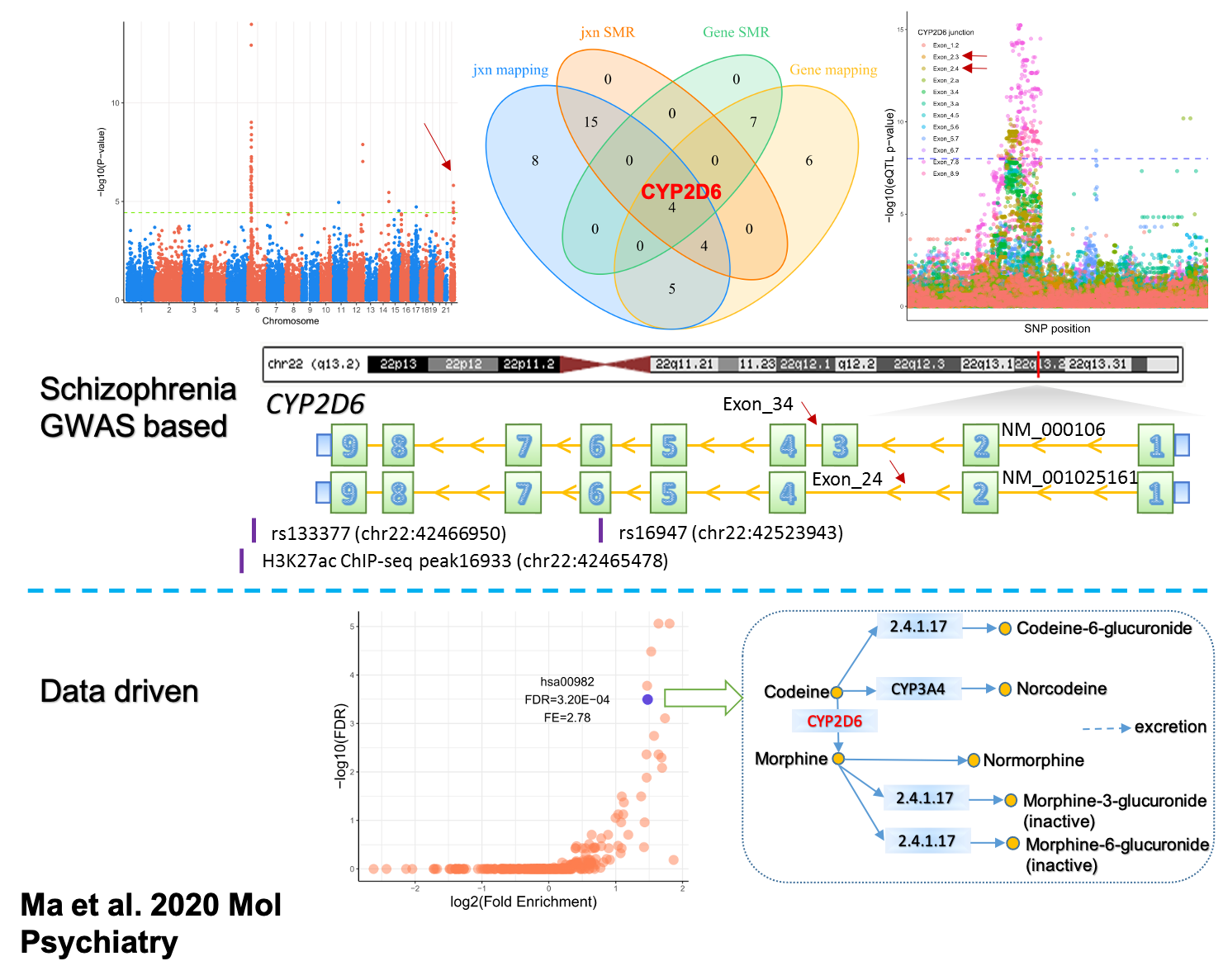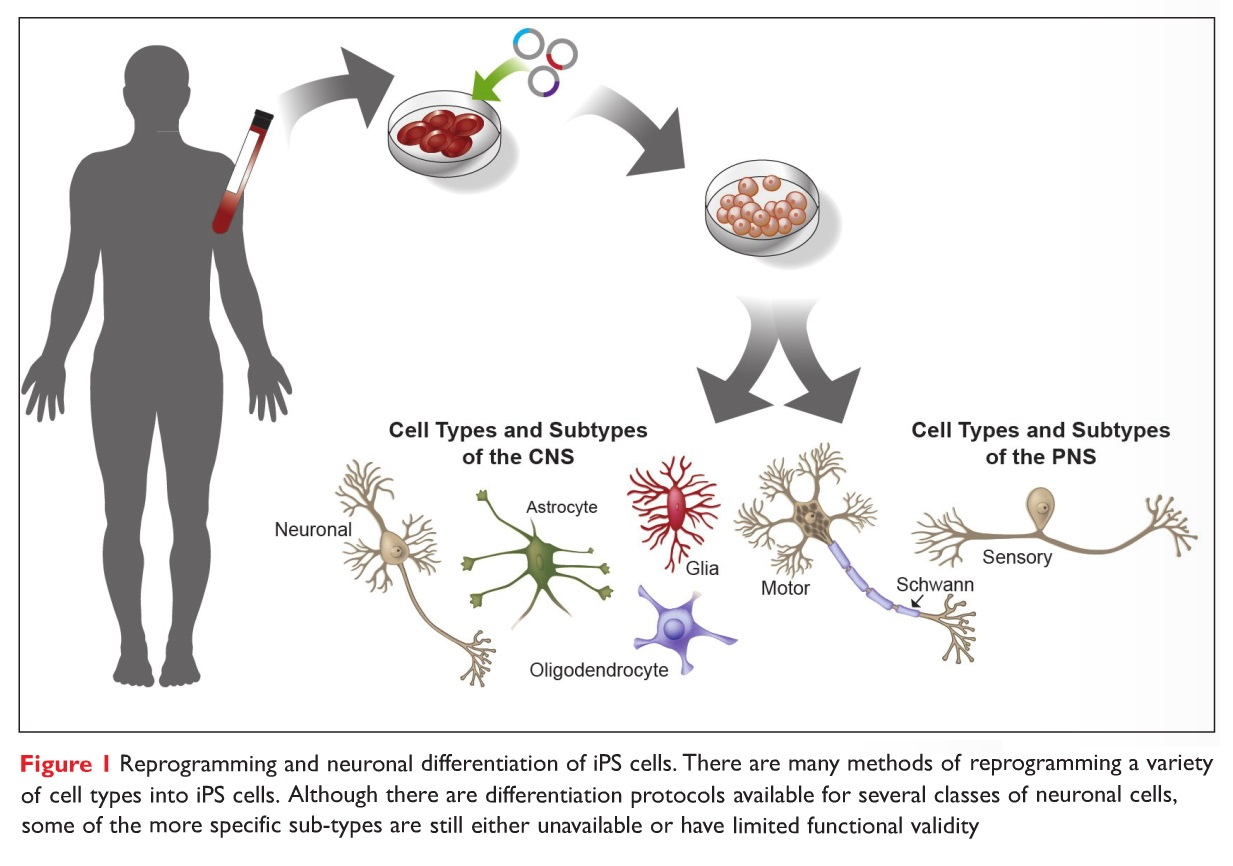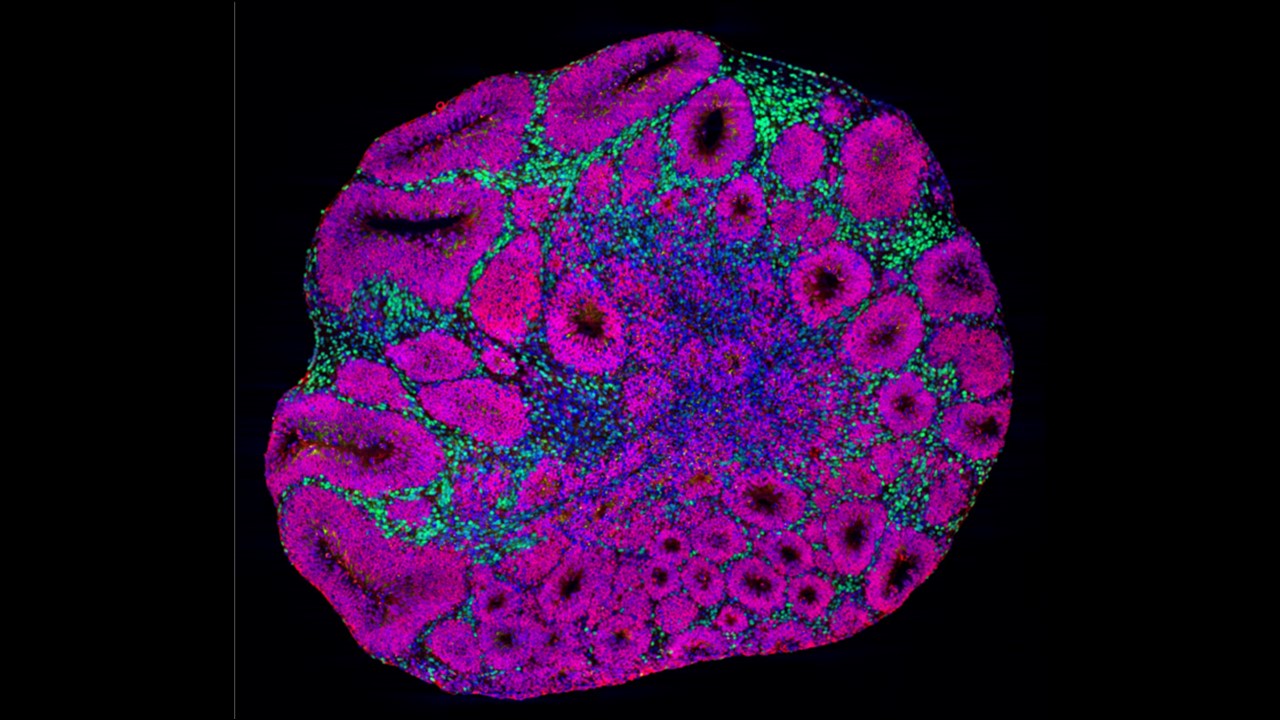Projects background
Based on schizophrenia GWAS data, we discovered a specific cluster of SNX19 gene transcripts associated with schizophrenia risk using RNA-seq and DNA methylation data combined with the genotyping data generated from 495 postmortem brains of schizophrenia and controls. We also investigated SNX19 transcript patterns in autopsy brains through molecular and cell biology experiments (Ma et al. 2019).
We are using CRISPR gene editing on human induced pluripotent stem cells (hiPSCs) to create isogenic lines, followed by differentiating them into 2D neurons and 3D brain organoids to study the impact of SNX19 on neuronal function (e.g., synapse loss, calcium level, and autophagy).
In parallel, we got SNX19 knockout mouse. We are performing a series of behavior tests to investigate the impact of SNX19 on cognitive functions.
I extended the investigation of functional genomic regions of schizophrenia from one gene to the whole genome to analyze RNA-seq data from 1,479 human postmortem brains combined with their whole-genome sequencing data. While confirming SNX19 splicing events in schizophrenia risk, I also identified alternative transcripts of CYP2D6 predisposed to schizophrenia. In parallel, I determined causal variations of CYP2D6 transcription by ChIP-seq and DNA methylation data generated from another cohort of human postmortem brains. Finally, convergence upon CYP2D6 as an essential candidate gene was identified again using a data-driven enrichment analysis (Ma et al. 2020).
We are using the mouse as a model to study the neuronal mechanism of CYP2D6. We delivered lentivirus into mouse brains. Then, we are testing the behavioral changes, synapse morphologies, and more. Follow-up with us!
Ongoing Projects
Genome-wide study
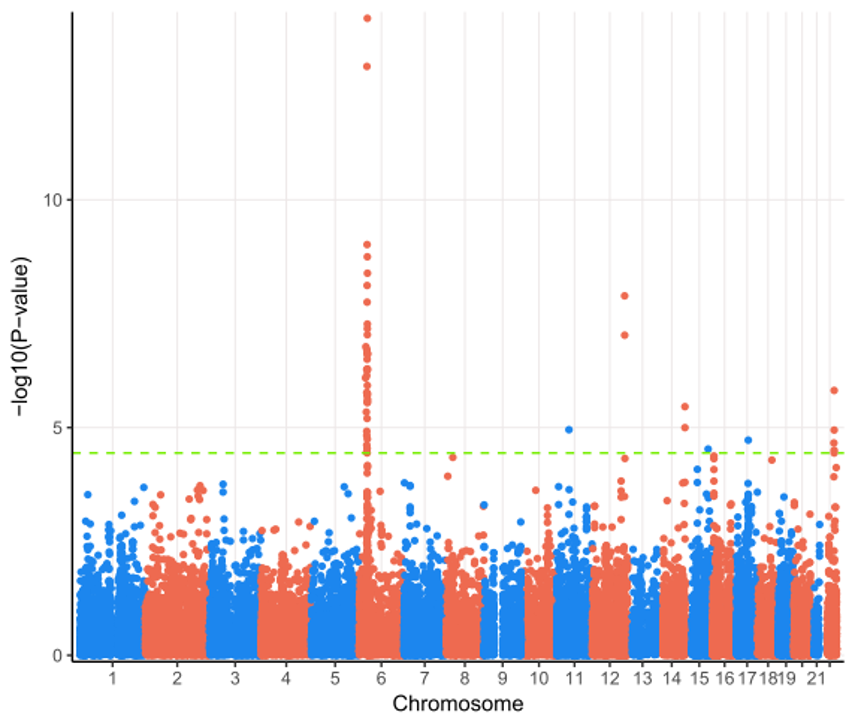
We perform genome-wide association between genetic variants and gene expression features, DNA methylations, histone markers, and more.
Transcripts diversity
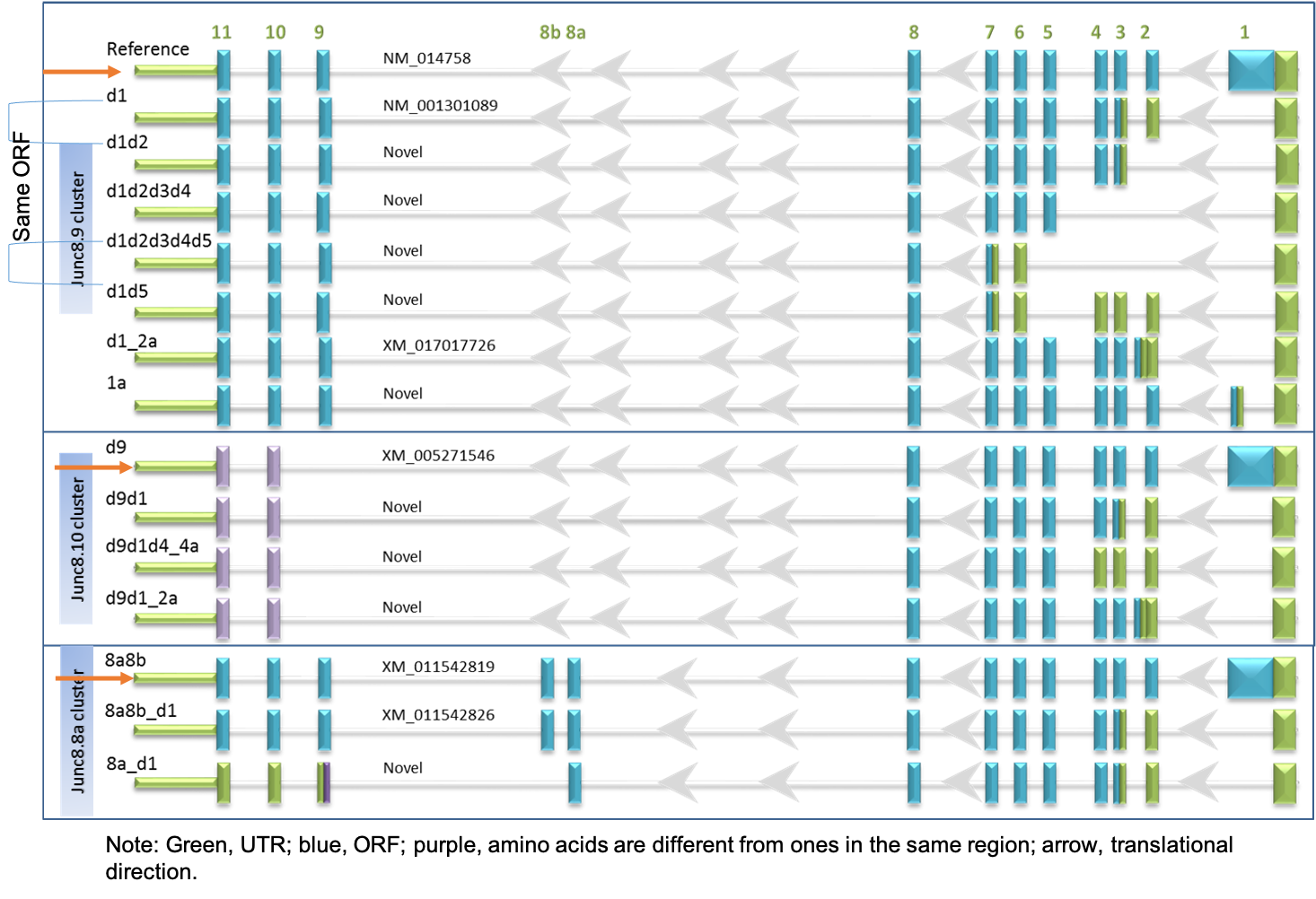
Epigenetic markers
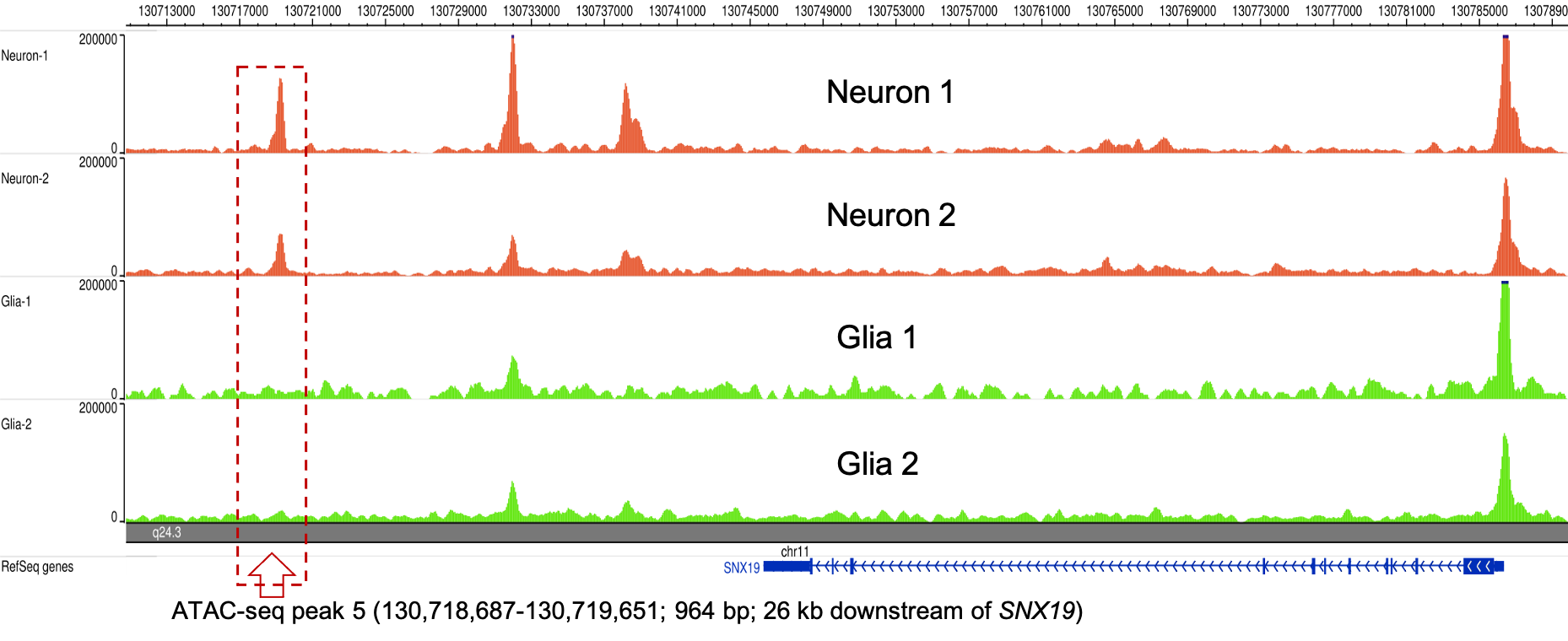
We are combing short-read RNA-seq and long-read sequencing to decipher transcript expression patterns in human brains.
We use DNA methylation, ChIP-seq, and ATAC-seq to study the gene regulatory mechanisms.
CRISPR gene editing
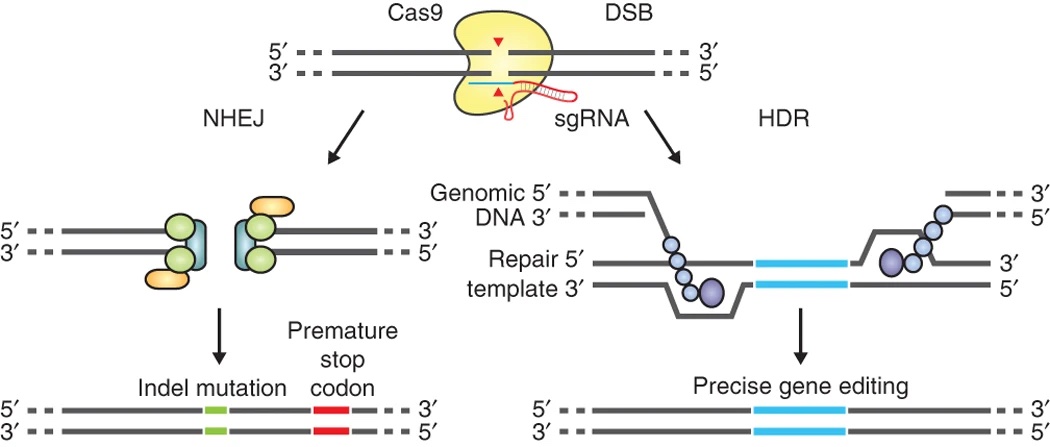
We are using CRISPR editing technology (Ran et al. 2013 Nat Protoc) on the disease genes we prioritized (e.g., SNX19).
Figure legend:
A brain organoid showing neuron precursors (magenta) and deep-layer projection neurons (green).

